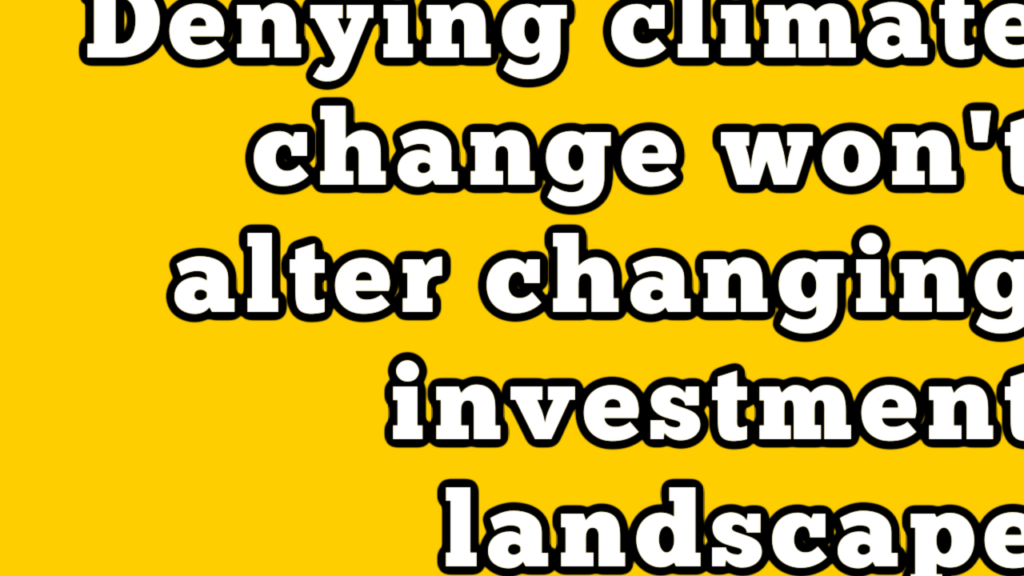Denying climate change won’t alter changing investment landscape

Here’s the intro from this article by Ian Simm:
For those who deal in the universal currency of facts, the extreme polarisation of views on climate issues makes no sense. The political narrative that climate change is a “hoax” willfully ignores economic reality.
Against a backdrop of rapidly expanding demand for energy, the competitiveness of key clean technologies, including renewables, is relentlessly improving. Meanwhile, the financial risks arising from climate-related disasters are too great to ignore: global losses from natural catastrophes totalled US$320bn in 2024.[1]
In this context, it is unsurprising that many risks and opportunities look mispriced, providing fertile ground for active investors with long-term perspectives. Yes, they need to pay attention to likely bumps in the road and remain alert to the changing nature of stranded asset risk. But the opportunities associated with the transition to a more sustainable economy remain fundamentally undimmed.
Rational forces will sustain focus on climate risks and solutions
Markets may be imperfect, but their participants are rational. So, while US Presidential Executive Orders will undoubtedly colour investment decisions, asset owners’ increasing interest in economic opportunities arising from climate-driven trends will continue to shape how capital is allocated. Four examples come to mind.
First, insurance markets will adjust to evolving risks through premiums and coverage. More expensive (or unobtainable) insurance ultimately creates incentives for relocation to less vulnerable areas. Pricing could drive adaptation by encouraging policyholders to directly reduce risks through measures like managing flammable vegetation in wildfire-prone areas.
Second, capital allocators will continue to enhance risk assessment and management processes as part of their fiduciary duty to factor material risks into decision-making. To ignore the potential impact of changing weather patterns is to recklessly and needlessly amplify exposure to risk of financial losses.
Third, the profile of power markets will continue to evolve as renewables and energy efficiency solutions become cheaper and so gain market share. Four-fifths of newly-commissioned, utility-scale renewable projects globally in 2023 had lower electricity generation costs than fossil fuel alternatives.[2] Meanwhile, investments will continue in hardware and software solutions that improve energy efficiency, thereby reducing users’ energy bills.
Fourth, rising cost-competitiveness ultimately brings emerging technologies into the mainstream. For example, electric vehicles’ (EVs’) share of global car sales rose from 4% in 2020 to 18% in 2023 as they have approached price parity with internal combustion engine cars. In China, small EVs are now cheapest even without subsidies.
